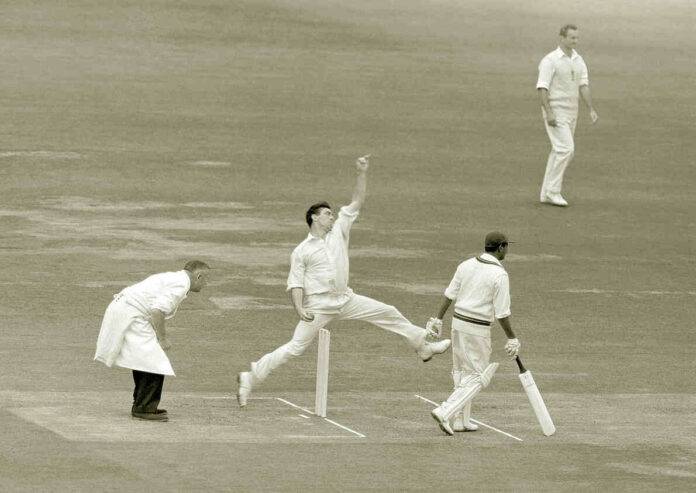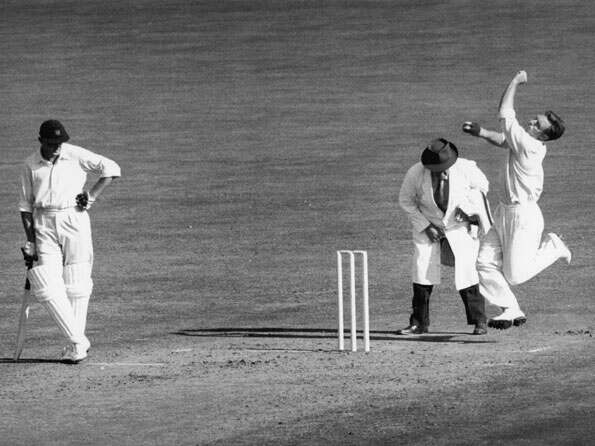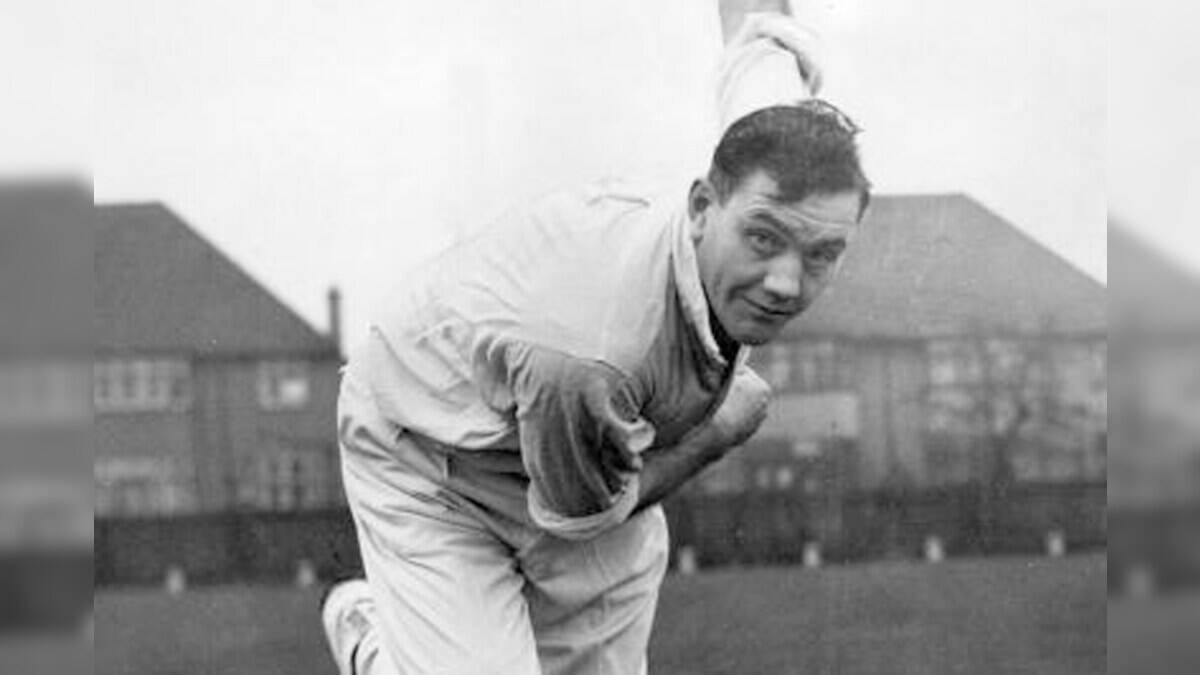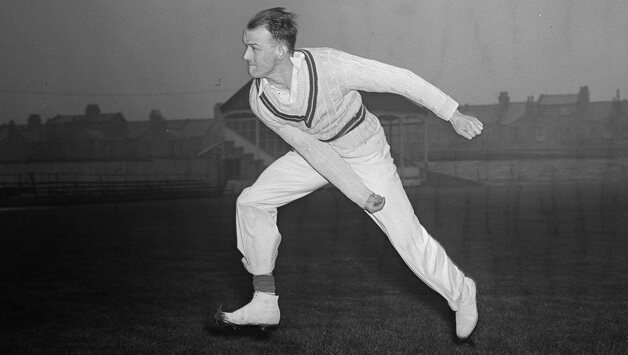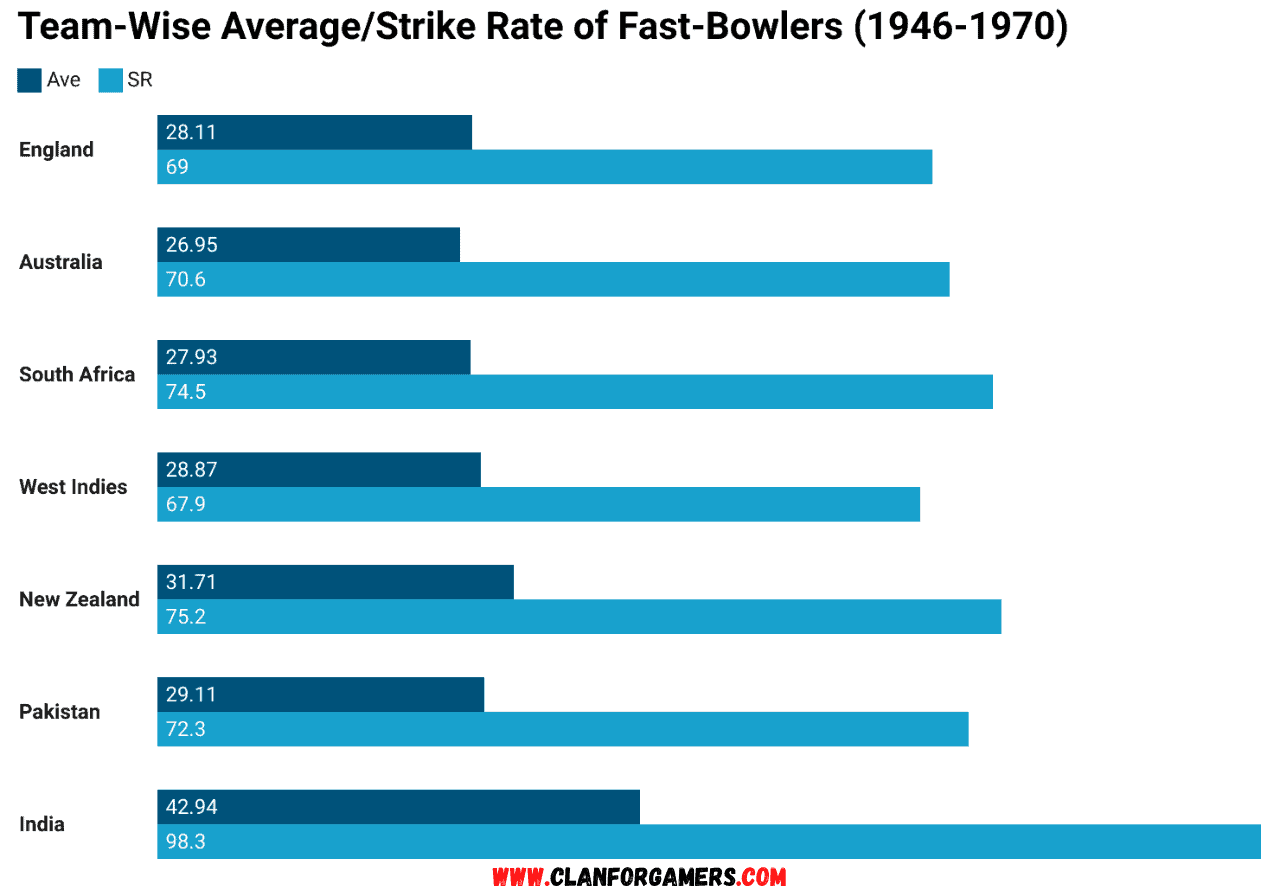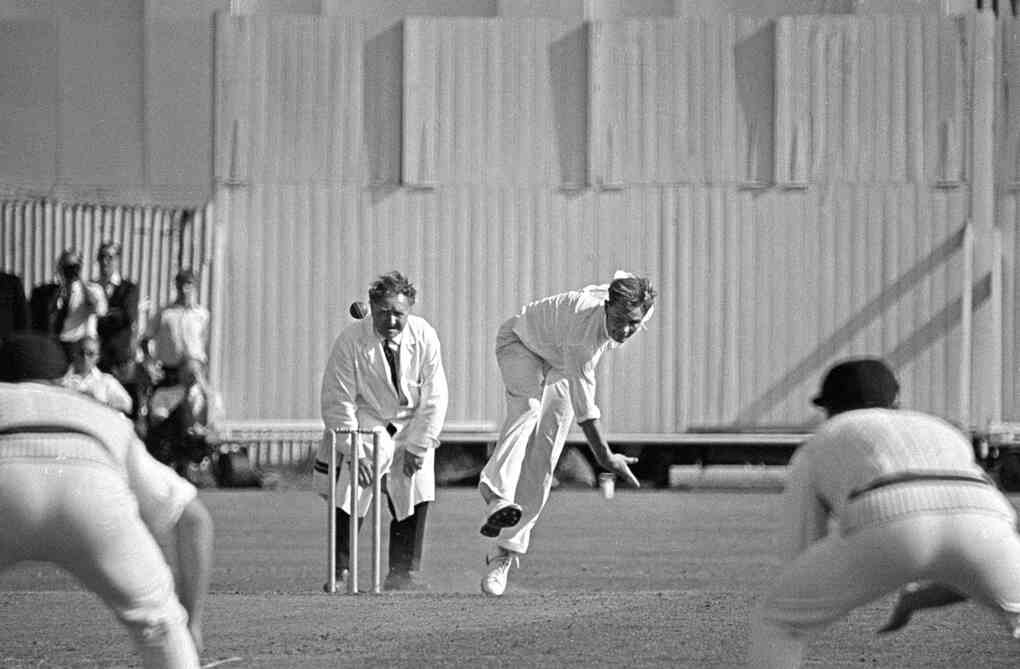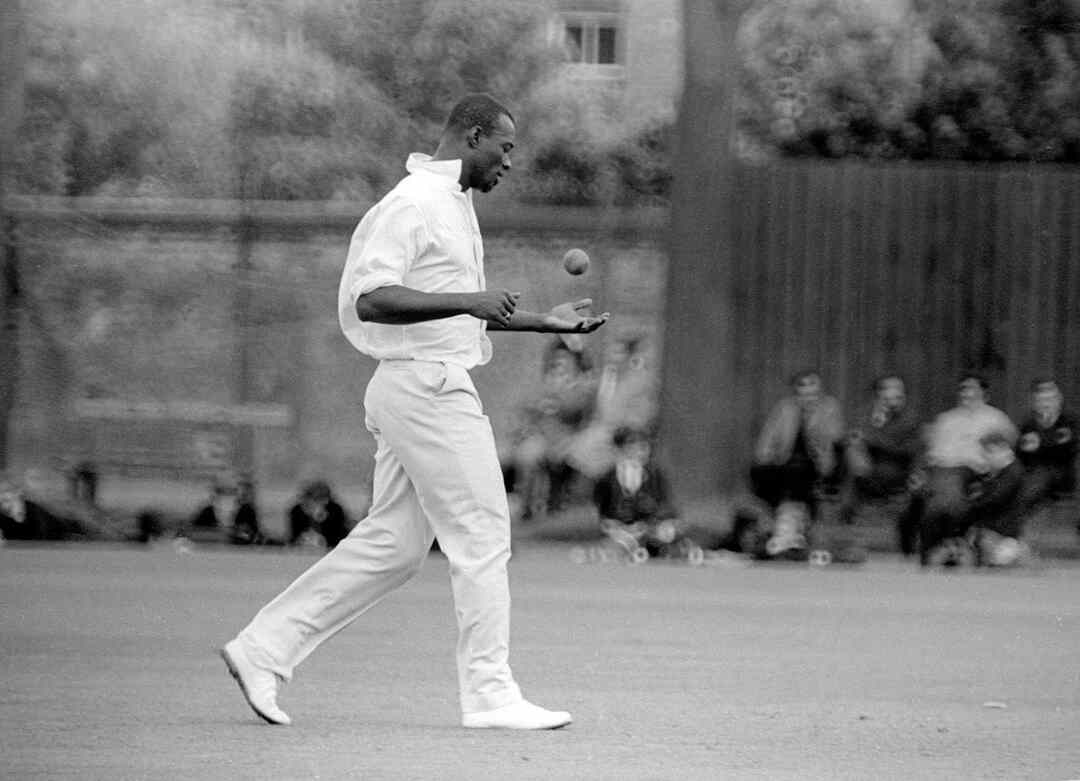“If someone wants to be a really good fast bowler, he will have to bear with the scorching sun and heat. If he does that, only then he can become a good bowler, and it’s a continuous process of learning.”
This is a famous quote by legendary Pakistani Pacer Wasim Akram.
Fast bowling has been one of cricket’s major deciding factors since its establishment, from Fred Spofforth to Pat Cummins with the likes of Sydney Barnes, Harold Larwood, Ray Lindwall, Alec Bedser, Fred Trueman, Richard Haddle, Imran Khan, Malcolm Marshall, Curtly Ambrose, Glenn McGrath, Dale Steyn and many more in between.
These fast bowlers were solely capable of ripping through the whole batting line-up.
Played by 100(s), loved by lakhs and watched by millions, cricket is the second most popular sport worldwide.
Fast Bowlers have a vital position in this sport and have to maintain physical fitness even more than other team members pursue a long career.
As we have a lot to talk about Fast bowlers in Test Cricket, we will complete this series of Articles in Four Parts.
- Fast Bowlers From post world war era till Pre ODI cricket era(1946-1970)
- Fast Bowlers from 1971-1992(Apartheid ban of South Africa)
- Fast Bowlers from 1993-2007(Before T20 Era)
- Fast Bowlers in the modern era(2008-2022)
Note: We would not talk about Pre World War Era because only England, Australia, South Africa, and West Indies had an adequate amount of Pacers in that era.
Here we would talk about the performance of fast Bowlers from the top 7 Test playing nations that too only in test cricket.
We would discuss each nation alphabetically and rank them accordingly at the end of each part.
Australia: Best side of this period
Australians have always produced Fast Bowlers of excellent pedigree, and that trend was followed in Post World War Era too. From Ray Lindwall to Allan Connelly, we would discuss each pacer involved in the success of Australia in that era.
Ray Lindwall
Regarded as one of the best of all time and simply the best of his era, Ray Lindwall was a bowler with express pace whose bowling action was inspired mainly by the Master of Bodyline, Harlord Larwood.
He has a smooth run-up with side-on bowling action, and his trademark delivery was an outswinger swinging lately with a good pace. He had the art of varying speed, and with outswinger, he was also capable of bowling yorkers and bouncers. He also mastered an inswinger delivery lately in his career with a lot of control which made him the best of his time.
He and his partner Keith Miller formed a new ball pair regarded as one of the best to have ever played the game.
- Matches-61
- Innings-113
- Wickets-228
- Bowling Average-23.03
- Bowling Strike Rate-59.8
- 5w haul(s)-12
Keith Miller
He was a cricketer with a good cricket brain and an attitude that selectors did not love.
His teammate Sid Barnes once said, “had the same outlook as Bradman or Ponsford, he would have made colossal scores” and become “the statisticians’ greatest customer”.
Coming to his bowling, he never felt short of experimenting with his delivery. He was faster than his partner Lindwall and Bowled a quicker delivery from a short run-up; a slower ball was always ready with him as a secret weapon.
- Matches-55
- Innings-95
- Wickets-170
- Bowling Average-22.97
- Bowling Strike Rate-61.5
- 5w haul(s)-7
Bill Johnston
Apart from Lindwall and Miller, there was also a third bowler named Bill Johnston, who was near to the same skill set as the other two possess. A tall left-arm pacer who can bowl bouncer but also has a delivery in his armoury that would Swing late and cut sharply.
- Matches-40
- Innings-75
- Wickets-160
- Bowling Average-23.91
- Bowling Strike Rate-69.0
- 5w haul(s)-7
Ernie Toshack
He was a left-arm medium-pace bowler who had received only 12 Test Caps. Ernie generally bowls at nagging length at middle-leg stump combined with 2-3 Short leg fielders.
He had the art to trouble the best opposition batsmen with change in speed and Sideways Movement. Toshack also holds the record for taking the cheapest fifer (5 runs for 2 Wickets). He achieved this feat against India at the Brisbane test of the 1947 series.
- Matches-12
- Innings-23
- Wickets-47
- Bowling Average-21.04
- Bowling Strike Rate-66.8
- 5w haul(s)-4
Alan Davidson
Until Wasim Akram debuted, Davidson was considered the best left-arm pacer to have played test cricket. An opening bowler who can generate an adequate amount of pace with a short run-up and can be very fast at times too.
When Australia toured India in 1959-60, he was successful in taking 29 wickets with an average near 15 with 7/93 at the Kanpur test.
In the first Brisbane test of the 1960-61 home series against WI, he became the first player to make a couple of a century and 10 wickets in a test match. He was phenomenal throughout the series and took 29 wickets at 18.55 apiece and helped his side win 2-1.
He retired at the early age of 33, with 186 wickets, by taking a wicket on his last ball. His career bowling average of 20.53 is the 6th best for any bowler until the end of the 21st century.
- Matches-44
- Innings-82
- Wickets-186
- Bowling Average-20.53
- Bowling Strike Rate-62.2
- 5w haul(s)-14
Ken Mackay
He was a right-arm, medium-pace bowler who primarily relied on stamina and accuracy.
An economical bowler who was generally helpful in India and Pakistan because of his ability to vary his pace and swing, making it difficult to score against him.
His economy rate of 1.78 is 4th among bowlers with at least 50 test wickets.
- Matches-37
- Innings-53
- Wickets-50
- Bowling Average-34.42
- Bowling Strike Rate-115.8
- 5w haul(s)-2
Graham McKenzie
A great man alongside a great bowler. His pace could injure any Batsman, but he never Bowled a single ball in anger. His other strength was his ability to bowl long spells when other bowlers felt tired.
He belongs to rare bowlers who succeeded in the slow subcontinental conditions. In India, he had 34 wickets with an average under 20 and was one of only six visiting pacers to have three fifers and a 10-wicket haul in India. In his first match in India, he took 10 wickets and helped his team win the game.
At 23 years and 162 days, McKenzie established a record for the youngest bowler to take 100 test wickets. With 264 wickets, McKenzie was Australia’s most successful bowler at the time of retirement.
- Matches-60
- Innings-113
- Wickets-246
- Bowling Average-29.78
- Bowling Strike Rate-71.8
- 5w haul(s)-16
Neil Hawke
A very hardworking pacer who performed as a support act with Graham McKenzie.He had a muscular, open-chested action that helped him inswinging the ball. He also had a leg cutter in his armoury, which snapped away from the batsman.
He is also remembered as the 300th test scalp of English pacer Fred Trueman at the Oval test of the 1964 series.
- Matches-27
- Innings-50
- Wickets-91
- Bowling Average-29.41
- Bowling Strike Rate-76.6
- 5w haul(s)-6
Allan Connelly
He was a tall Bowler with a lean physique who bowled at a good pace and could extract an adequate amount of bounce from the pitch. Alan bowled in partnership with McKenzie in 1960(s).
Later in his career, Connoly slowed his pace to save more on accuracy. In the 1969-70 SA tour, he took 20 wickets at 26.10, whereas other Australia’s combined pacers took 17, averaging 61.70.
- Matches-29
- Innings-55
- Wickets-102
- Bowling Average-29.22
- Bowling Strike Rate-76.6
- 5w haul(s)-4
England: Land of Sydney Barnes and Harold Larwood
The country which made this game famous worldwide also has a great history of fast bowlers. From Sydney Barnes (Bowling average less than 17) and Harold Larwood(The Master of Bodyline) in Pre World War Era to James Anderson in recent times, England had great test Bowlers in different eras. Still, there were times, too, when they were short of Pacers who could rip through the bowling line-up. So, here we are sharing about different Pacers England had in 1946-1970 (Pre ODI era).
Alec Bedser
He was an old-fashioned, uncomplicated right arm above medium-pace bowler with a modest run-up and high arm good action. Leg Cutters and Fast leg breaks were among his trademarks. He was not a Bowler who would bowl Half Volleys or a loose ball, but his main strength relied on the fact that batsmen needed to play every ball he delivered.
England lost the 1950-51 Ashes by 4-1, but he managed to take 30 scalps at an average of 16.06. When in 1953, England regained the Ashes, his tally says 39 wickets at an average of 17.48.
Bradman remarks that Bedser as the toughest bowler he ever faced as Bedser removed him 5 times. Arthur Morris fell prey to him 18 out of 21 times. Neil Harvey was his other left-handed victim as he fell to him 12/13 times, so we can say that he had an art of removing the best batsman from the opposite side.
- Matches-51
- Innings-92
- Wickets-236
- Bowling Average-24.89
- Bowling Strike Rate-67.4
- 5w haul(s)-15
Trevor Bailey
He was a Tough, defensive batsman who possessed a lot of patience, and his presence on the crease could irritate bowling attacks multiple times. But with his batting abilities, he was a pacer who bowled above Medium-pace and could swing the ball away from a right-hander. He had a high arm sideways action, which encouraged Outswing.
In his Initial days, he was an opening Bowler with his partner Alec Bedser, but after the Arrival of Brian Statham and Frank Tyson, he majorly played as a first-change bowler.
- Matches-61
- Innings-95
- Wickets-132
- Bowling Average-29.21
- Bowling Strike Rate-73.5
- 5w haul(s)-5
Brian Statham
He was a right-arm fast bowler (arguably the most immediate of his era) known for his consistency in line and length. He would pitch the ball on the seam and could achieve reasonable deviation from the pitch. For a short period in 1963, he was the leading wicket-taker in the international Circuit with 252 scalps but was later surpassed by Fred Trueman.
Fast bowlers generally are not considered good fielders. Still, Statham primarily operated on boundary positions because of his fast running skills and accuracy in throwing. As we said for Lindwall-Miller, we could say the same for Statham-Trueman, as they are considered one of the best bowling pairs to play the game.
He was not a swing bowler, but even on the flattest wickets, he could deviate the ball from outside off stump to the middle of stumps. Frank Tyson said, “He bowled it by placing the first two fingers of his hand on one side of the vertical seam, with the remaining fingers spread and tensed on the opposite side of the ball. At the moment of release, he snapped the index and second finger from off to leg, imparting a vicious cut.”
- Matches-70
- Innings-129
- Wickets-252
- Bowling Average-24.84
- Bowling Strike Rate-63.7
- 5w haul(s)-9
Fred Trueman
A destructive fast bowler who was a treat to watch on the pitch. His run-up was approximately the size of a pitch length, hit the ground firmly, and would generate a late out swing from the middle stump. On green tops, he could seam the ball too. Yorkers, bouncers and slower ones were other weapons in his armoury.
In 1952, he announced his Arrival on the international Circuit by reducing Indian batsmen to 4/0 and finished with figures of 8/31.
In the 1961 Headingley test against Australia, he displayed his intelligence by slowing his pace and bowling cutters on a dusty pitch, thus finishing with second-inning figures of 6/1.
In the 1964 Oval game against Australia, He got Neil Hawke out at slip by Colin Cowdrey, becoming the first bowler to take 300 Test wickets. His final stats read 307 wickets at 21.57, striking at every 49-50th ball(SR 49.43)
Like Statham was a great deep fielder, Trueman was a gem of a catcher, taking many out-of-reach catches at near positions, primarily at leg slips.
- Matches-67
- Innings-127
- Wickets-307
- Bowling Average-21.57
- Bowling Strike Rate-49.4
- 5w haul(s)-17
Peter Loader
He was not a Very fast bowler, but when he released the ball, it travelled fast, and his Bouncers were too nasty to face. Questions were often raised about his Bowling action, majorly on his short balls.
In the 1957 Headingley test against the Windies, he dismissed three batsmen in a row to become the seventh Englishman to take a hat trick. He finished with Inning figures of 6/36. He received only 13 test caps and finished with 39 wickets at 22.51.
- Matches-13
- Innings-26
- Wickets-39
- Bowling Average-21.51
- Bowling Strike Rate-68.2
- 5w haul(s)-1
Frank Tyson
He was one of the fastest bowlers ever to have played this game of cricket. Standing in the slips, Tom Graveney noted: “I was 50 yards back at slip to Frank and nearer the pavilion gate than the wicket. It was like fielding tracer bullets.” Even Bradman used to mention him as the fastest bowler he ever faced.
Tyson can also be mentioned in the unfortunate cricketers’ list as he got to Play only 17 Matches. In these, he took 78 wickets, averaging merely 18.56. Of the bowlers with the minimum of 75 test wickets, he is seventh in the list of bowling averages; all of those top 6 played before World War 1.
- Matches-17
- Innings-29
- Wickets-76
- Bowling Average-18.56
- Bowling Strike Rate-45.4
- 5w haul(s)-4
Barry Knight
Barry was an all-rounder who batted in the middle order and bowled right-arm fast-medium with curious wrist action.
He was able to play only 29 tests in his 8 years long test career. This was due to the presence of a good batting lineup and brilliant pacers.
Knight debuted in 1961 vs India because the main players opted out of this series. He played against India in 1963-64 too, and his 127 runs with a four-wicket hall at Kanpur remains one of his best performances.
- Matches-29
- Innings-54
- Wickets-70
- Bowling Average-31.75
- Bowling Strike Rate-76.8
- 5w haul(s)-0
David Brown
He was a 6’4″ tall bowler with the strength to extract extra bounce from the pitch, which helped him perform better on away hard pitches than on green tops in England.
On the 200th test between Australia and England, he recorded figures of 5/42 and helped his team to stop Australia at 78.
- Matches-26
- Innings-46
- Wickets-79
- Bowling Average-28.31
- Bowling Strike Rate-64.5
- 5w haul(s)-2
Ken Higgs
A new ball bowler who bowls with the curved run-up can also swing the ball in the air and from the pitch. He took 71 wickets in 15 matches at 20.74 and was another unfortunate cricket alongside Tyson to not receive more test caps.
- Matches-15
- Innings-27
- Wickets-71
- Bowling Average-20.74
- Bowling Strike Rate-57.9
- 5w haul(s)-2
John Snow also played for the last 5 years in 1960(s), but we will cover him in the next part.
India: Pacers from a spin-dominated nation
India’s history of fast bowlers was never such great. Currently, India has the best pace attack around the globe.
But in the 20th century, other than Kapil Dev and Javagal Srinath, no one had much impact, primarily due to slow pitches in India. In 25 years, from 1946 to 70, we would mention only three bowlers in our India section of this article.
Gulabrai Ramchand
An excellent medium pace Swing opening Bowler who primarily relied on the inswinger. At Karachi in 1954-55, he finished with figures of 6/49, a record for an Indian bowler in Pakistan until Kapil Dev’s 7/220 at Faislabad in the 1982-83 series.
- Matches-33
- Innings-56
- Wickets-41
- Bowling Average-46.31
- Bowling Strike Rate-121.3
- 5w haul(s)-1
Ramakant Desai
He was a 5’4″ inch pacer who used to trouble batsmen with his bouncers, rare for any Indian pacer then. As he was the only pacer in that Indian team, he was overworked and decided to retire at 29.
Hanif Mohammad of Pakistan can be termed as his ‘Bunny’ because Desai got him out 9 times in the 1960-61 series.
- Matches-28
- Innings-45
- Wickets-74
- Bowling Average-37.31
- Bowling Strike Rate-75.6
- 5w haul(s)-2
Rusi Surti
Rusi was a useful all-rounder in every aspect of the game. He was an exceptional fielder and could bat anywhere on the side.
Coming to his bowling, Surti was a left arm Bowler who could bowl both medium pace and spin bowling. He was the first Indian player to make a couple of 50 runs and 5 wickets against Australia.
- Matches-26
- Innings-45
- Wickets-42
- Bowling Average-46.71
- Bowling Strike Rate-92.1
- 5w haul(s)-1
New Zealand: Pacers before great Richard Hadlee
Like India, New Zealand’s bowling has been at the top recently. Still, they didn’t feature a great history of bowlers (undoubtedly better than India). Even less than India, we would mention only two Bowlers for New Zealand in these 25 years.
Tony MacGibbon
A right-arm fast-medium pacer who led his team’s bowling attack in 1950(s).
He Bowled with a medium-length run-up of approx 8-10 paces and had a sidearm bowling action. Tony was tall and could move the ball off the seam.
In 1952, due to a plan, he shortened his run-up length even more against the Proteas and took 22 Wickets averaging 21, making this his best series.
- Matches-26
- Innings-37
- Wickets-70
- Bowling Average-30.85
- Bowling Strike Rate-80.8
- 5w haul(s)-1
Dick Motz
The First Kiwi pacer to take 100 test scalps was Dick Motz. He took 5 fifers in his career; one came in England, and 4 at home, shared 2 between India and West Indies.
Dick was also famous for the incident of being banned due to running between the wickets in 1968, as he was the first bowler in such a case.
- Matches-32
- Innings-55
- Wickets-100
- Bowling Average-31.48
- Bowling Strike Rate-70.3
- 5w haul(s)-5
Pakistan: Beginning of an era of destructive Fast Bowlers
It is a common saying that if the partition had never happened,(India+Pakistan) would have been the best side because of the Indian Batsmen and Pakistani Pacers. Pakistan has a broad history of Pacers initiated with Fazal Mahmood (First Poster Boy Of Pakistan). So, let’s know about him and one more pacer.
Fazal Mahmood
In the initial days of Pakistan cricket, he played a significant role in gaining this side its identity. He helped his team win in its second match only (that too Against India) in Lucknow. 12/94 were his match figures and were the best by any bowler against India till 1980.
After the first three tests of the 1954 England tour, the scoreline was (England 1-0 Pakistan). In the last innings of the final test, England needed 168 runs to win but fell short of 24 runs due to Fazal’s spell of 6/46 in 30 overs, and Pakistan became the first side to win a test match on their first tour to England. This Mahmood spell can be termed one of the best solo fast-bowling spells in Pakistan’s Cricket History.
- Matches-34
- Innings-53
- Wickets-139
- Bowling Average-24.7
- Bowling Strike Rate-70.7
- 5w haul(s)-13
Khan Mohammad
He received just 13 test caps and was opening Bowler with Mahmood. Khan bowled Pakistan’s first ball and took their first wicket in International Cricket.
He was tall and even quicker than Fazal at times (although both were medium fast). His strength relied upon varying pace and accuracy.
When India visited Pakistan for the 1954-55 series, Mohammad clinched 22 wickets averaging less than 16.
- Matches-13
- Innings-22
- Wickets-54
- Bowling Average-23.92
- Bowling Strike Rate-58.4
- 5w haul(s)-4
South Africa: Adcock, Goddard and 3 P(s)
Dale Steyn, Vernon Philander, Morne Morkel, This was the bowling unit I grew up watching on my Television Screen. Whenever SA played cricket, they had Fast Bowlers able to dominate the opponents through their pace, accuracy, etc. So here, let’s look at their pacers in Post World War Era until they were banned from International Cricket.
Cuan McCarthy
A 6’2″ tall bowler who opened the Fast bowling for South Africa. He had genuine pace, and his strength was bowling deadly off-cutter—one of the rare players to take more no. of wickets than runs scored.
- Matches-15
- Innings-25
- Wickets-36
- Bowling Average-41.94
- Bowling Strike Rate-97.1
- 5w haul(s)-2
Neil Adcock
He was a terror of a fast bowler and was the first South African to take 100 test wickets at an average of 21.
He was too fast, but his strength was to move or pitch the ball that would aim directly at the head of the batsman. In Australia’s chase of 68 at the Port Elizabeth Test of 1957-58, Trevor Goddard took 2 steps back at the gully after the first delivery and two more after the second.
Peter May and Colin Cowdrey regarded him and Heine as “two of the nastiest”.
He has 104 Wickets at a 21.1 Average in 26 tests with 5 fifers. Just like Cuan McCarthy, he could not bat at all (Batting Average 5.4), and his runs 146 are just 42 above his wicket Talley.
- Matches-26
- Innings-46
- Wickets-104
- Bowling Average-21.10
- Bowling Strike Rate-61.4
- 5w haul(s)-5
Peter Heine
He was the other half of the Adcock-Heine pair, and he bowled consistently towards the wickets as if his main aim was to hit the batsman.
In 14 tests, he has 58 wickets at 25.08. In 13/14, he bowled with Adock and had 102 wickets at 22.08, forming the first significant new ball pair for South Africa.
- Matches-14
- Innings-27
- Wickets-58
- Bowling Average-25.08
- Bowling Strike Rate-67.0
- 5w haul(s)-4
Trevor Goddard
An Unsung All-rounder of test cricket who was pretty good in all three aspects (batting, bowling or fielding).
He generally was the first change left arm fast medium Bowler; initially to Adock-Heine and then to Pollock-Procter. He Mostly bowled with the spinner Hugh Tayfield to form one of the best partnerships ever.
His economy rate of 1.64 is best for a bowler with a minimum of 30 test wickets. He was a great close-in fielder who mainly operated at slips, short leg or silly mid-on. He opened the batting in 74/78 Innings he played.
Sadly, he was left out of the England tour of 1970 (which never occurred due to the Apartheid ban) and was dropped from the last match of the previous test series. So his career ended one test soon.
Goddard has 123 wickets in 41 tests at 26.22 with 2516 runs at 34.66 and 48 catches. These stats are enough to prove him as a great all-around cricketer.
- Matches-41
- Innings-75
- Wickets-123
- Bowling Average-26.22
- Bowling Strike Rate-95.4
- 5w haul(s)-5
Peter Pollock
He picked up 3-61 in the first innings on his debut. New Zealand needed 197 runs to win the match, but Pollock bowled a fantastic spell of 6-38 to stop NZ on 166, thus winning the game by 30 runs. His Match tally of 9/99 was second best by a South African till that match (4th till now)on debut.
In the 1964/65 England tour, he was advised to cut short his run-up so that he could boost his stamina and could bowl more overs. But, he didn’t do that and, more importantly, varied his pace.
Now he used his fast deliveries as a weapon and were explosive. Even he bowled fewer bouncers, moved that ball in the air and could bowl up to 30 overs a day.
South Africa won the Nottingham match of the same 1965/65 series because of him and his brother Graeme Pollock. The younger one first scored 125, and then Peter took 5/53. Graeme scored 59 in the third Innings, and Peter retook a fifer for 34 runs. It was his first and only 10-wicket hall in test cricket.
When Australia visited SA in 1970, he had Proctor as his partner (A Short and Sweet Partnership in Test Cricket).In the series, Pollock had 15 Wickets at 17.20, while Procter had 26 at 13.70.
Pollock played 28 tests and took 116 wickets with an average of less than 25(24.18). As a batsman, he has 607 at 21.67 and 2 fifties. In 1966, he was selected as the Wisden Cricketer of the year.
- Matches-28
- Innings-52
- Wickets-116
- Bowling Average-24.18
- Bowling Strike Rate-56.2
- 5w haul(s)-9
Joe Patridge
He was the new ball bowling partner to Peter Pollock in 8 Matches and took 38 wickets at 28.42. He was a rare fast bowler who wore spectacles while Playing.
- Matches-11
- Innings-20
- Wickets-44
- Bowling Average-31.2
- Bowling Strike Rate-83.7
- 5w haul(s)-3
Mike Procter
An all-round cricketer who was denied much of the international stage because of the South Africa Cricket Team being banned.
He was a furious fast bowler who played in just 7 test matches, all of them against Australia in 1970 and was a responsible force in two consecutive series wins of 3-1 and 4-0.
At 15.02, he took 41 wickets and was selected as Wisden Cricketer of the year in 1970.
- Matches-7
- Innings-14
- Wickets-41
- Bowling Average-15.02
- Bowling Strike Rate-36.9
- 5w haul(s)-1
West Indies: Fast, Nasty and Dangerous
Starting with the duo of Hall-Griffith, followed by fearsome four+Malcolm Marshall and ended with the pair of Ambrose-Walsh and many other prominent Bowlers in between, West Indies Fast Bowling is arguably the best in the 21st century.
Let’s discuss their pacer in the Initial 25 years of the Century after World War.
John Trim
He was a right-arm fast-medium Bowler who took 18 wickets in a career spanning just 4 Test matches. His career bowling average of 16.16 is one of the lowest in history. He belonged to Berbice, British Guiana and was the first Berbician to receive a test cap.
- Matches-4
- Innings-8
- Wickets-18
- Bowling Average-16.16
- Bowling Strike Rate-44.1
- 5w haul(s)-1
Hines Johnson
In his debut match, Johnson took fifers in both Innings and was the first West Indian bowler to take 10 wickets on his test debut.
- Matches-3
- Innings-5
- Wickets-13
- Bowling Average-18.30
- Bowling Strike Rate-60.6
- 5w haul(s)-2
Frank McDonald King
He was a hostile right-arm pacer who opened the bowling for West Indies during mid-1950 (s). In the third test of the India tour of 1952-53, he broke the hand of Indian Wicketkeeper Ebrahim Maka through his bumper, which was called his special delivery.
Whenever he Bowled, an injury is around the corner (either the batsman or he could injure himself too).
- Matches-14
- Innings-23
- Wickets-29
- Bowling Average-39.96
- Bowling Strike Rate-98.9
- 5w haul(s)-1
Roy Gilchrist
He is still arguably the most dangerous man to play cricket. He had a reputation for hitting batsmen to get them out. He used bouncers unnumberable times and also used beamers frequently. His international career was over at the young age of just 24.
Chandu Borde, the Indian batsman, said, “Hall was fast in patches and used to mix his pace cleverly. Gilchrist was fast all the time and had tremendous stamina.” He was just 5’8″, but his fast run-up, high jump and high arm action compensated for his height.
He said: “I have searched the rule books, and there is not a word in any of them that says a fellow cannot bowl a fast full-toss at a batsman; a batsman has got a bat, and they should get the treatment they deserve unless he hasn’t got the technique or the courage.”
In between a domestic first-class match in India, he bowled beamers constantly to Swaranjit and was called by his captain to go home.
He didn’t play a test match again, and his test career was over. In 13 tests, he has 57 scalps at 26.68 apiece.
- Matches-13
- Innings-23
- Wickets-57
- Bowling Average-26.68
- Bowling Strike Rate-56.6
- 5w haul(s)-1
Wesley Hall
A 6’5″ tall, powerful, muscular man with a long run-up (arguably the longest in cricket) who could bowl long spells. In the lord’s test of 1963, he constantly bowled for 3 hours without being changed.
He was the first West Indian to take a Hat-trick in test cricket and bowled the final over in the first-ever tied match against Australia in 1960.
He took 4/107 in his debut test against India at Brabourne and was the lead pacer of the attack in his second test, where he took 11 Wickets in the match.
His best innings figure of 7/69 came against England at the Sabina Park test of 1960. Wisden marked that Hall “with a lovely action, genuine speed and remarkable stamina” was “always the biggest threat to England.”
- Matches-48
- Innings-92
- Wickets-192
- Bowling Average-26.38
- Bowling Strike Rate-54.2
- 5w haul(s)-9
Charlie Griffith
He was a tall, fast athlete who terrorized Batsmen with Bouncers and toe-crushing Yorkers. Alongside Hall, he formed one of the most lethal combinations ever.
His career had some controversies too. He was twice called for throwing and also ended the career of India Captain Nari Contractor by fracturing his skull by a bouncer. Wisden selected him as the cricketer of the year in 1964.
- Matches-28
- Innings-50
- Wickets-94
- Bowling Average-28.54
- Bowling Strike Rate-59.9
- 5w haul(s)-5
Statistical Comparison of Fast Bowling Attacks (Team-Wise)
We will compare these fast bowling attacks based on a metric where we will know how many runs a Pace bowling unit will give against the same batting line-up.
First, we will find the Mean Batting Average of the batting line-up who played against the team (for each bowling unit).
Now we will divide this mean batting average by their bowling average in these 25 years to get an idea of how good each bowling unit was against the same batting line-up.
The higher the ratio, the better the bowling attack is.
Then to obtain the desired value (how many runs the same batting line-up makes against each bowling unit), we will divide 400 by the obtained ratio (supposing that the batting line-up makes 400 runs in each inning)
Formulae-
Let’s suppose Team 1 played ‘a’ no. of matches against Team 2 in 25 years
[a1,a2,a3— are the matches played against the team each year].
[x1,x2,x3— are the batting averages of Team 2 in the calendar years in which those matches were played]
and same against Team 3[b1,b2,b3— are no. of games played in each year] and [y1,y2,y3,— is the batting average for Team 3 in those respective calendar years]and so on for Team 4, Team 5—-.
So Mean Batting Average of Batting line up against Team 1 pacers is
[a1x1+a2x2+a3x3+ —]+[b1y1+b2y2+b3y3+ —]+[c1z1+c2z2+c3z3+ —]+—-/ [a1+a2+a3+—]+[b1+b2+b3+—]+[c1+c2+c3+—]+—-
Where, [b1+b2+b3+—]+[c1+c2+c3+—]+[d1+d2+d3+—]+—- is the total no. Of matches played by Team 1 in 25 years span.
Let’s denote this Mean Batting Average As ‘P’ and the Bowling Average for Team in 25 years span as ‘Q.’
So,(P/Q) ratio defines how well a bowling team Bowled against a similar batting line-up. The greater the ratio (P/Q) is the better bowling.
Let’s calculate this ratio for each of the seven-team and find the value.
1) Australia
Australia against England:
Played (2) Matches in 1946 in which the batting average of England was (26.86)
(3) in 1946, with the Batting average of England being (40.76)
(5) in 1948 with (27.22)
(2) in 1950 with (21.35)
(3) in 1951 with (30.85)
And so on
till 1970 when they played (2) Matches with the batting average of England being (41.77)
Let’s multiply and add:
(2×26.86)+(3×40.76)+(5×27.22)+(2×21.35)+(3×30.85)+———-+(2×41.77)=1969.83
Let’s name this quantity (p’1)
Australia against India:
(2) in 1947, with the batting average of India being (10.43)
(3) in 1948 with 31.63
And so on
Till 1969 where Australia played 5 matches, and the Batting Average of India was (20.18)
Let’s name this product and addition as (p’2)=
(2×10.43)+(3×31.63)+———-(5×20.18)
(p’2)=628.65
Australia against New Zealand played only 1 Match in 1946 where batting average of New Zealand in 1946 was 4.30
So,(p’3)=1×4.30
(p’3)=4.30
(p’4) against South Africa =885.18
(p’5) against West Indies=782.18
(p’6) against Pakistan=149.47
(p’)=(p’1)+(p’2)+(p’3)+(p’4)+(p’5)+(p’6)
(p’)=(1969.83)+(628.65)+(4.30)+(885.18)+(782.18)+(149.46)
(p’)=4415.31
(P)=(p’)/Total no. Of Matches played by Australia in 25 years, i.e. 148
(P)=4415.31/148
(P)=29.83
(Q)=Mean Bowling average of Australian Pacers in these years and, i.e. 26.95
(P/Q)=29.83/26.95
(P/Q)=1.11
Similarly, P/Q Values for other teams:
- England-1.06
- India-0.76
- New Zealand-0.96
- Pakistan-1.13
- South Africa-1.09
- West Indies-1.01
So, by this (P/Q) ratio, it is concluded that; for a team with the same batting average, Pakistan would bowl them out cheapest, followed by Australia. In contrast, the Indian Pacers would leak the most runs.
If there is a batting side scoring 400 runs on average, how many runs would each team’s pacers give to bowl them out?
- Australia=400/1.11=360
- England=400/1.06=377
- India=400/0.76=526
- New Zealand=400/0.96=417
- Pakistan=400/1.13=353
- South Africa=400/1.09=367
- West Indies=400/1.01=397
So, if only pacers were bowling in the match, Pakistan would finish the opponent’s innings on 353 runs. In contrast, India would give 526 runs for a team scoring 400 runs per match.
Conclusion
This article discusses each fast bowler in test cricket who made an impact in the post-World War era until the start of ODI cricket(1947-70).
After mentioning each bowler, we made a statistical comparison of the whole Bowling unit, which shows how they will fare against a specific batting line-up.
I hope you have liked this. Don’t forget to share this on social media accounts and give your valuable opinion in the comments section.
Following this series, our next article would be on the era of Fast Bowlers when fast bowling was at its peak (1970-92)

